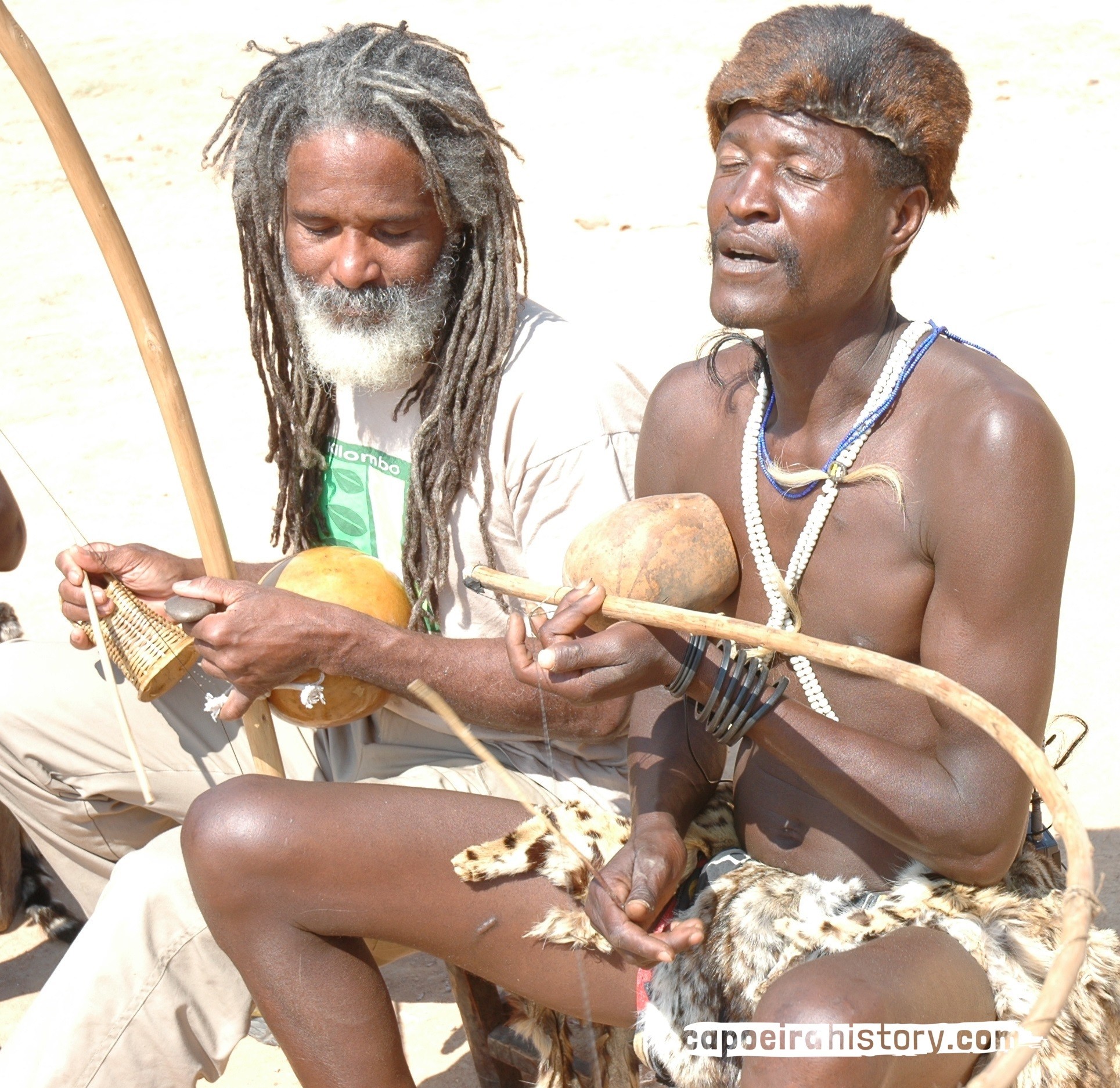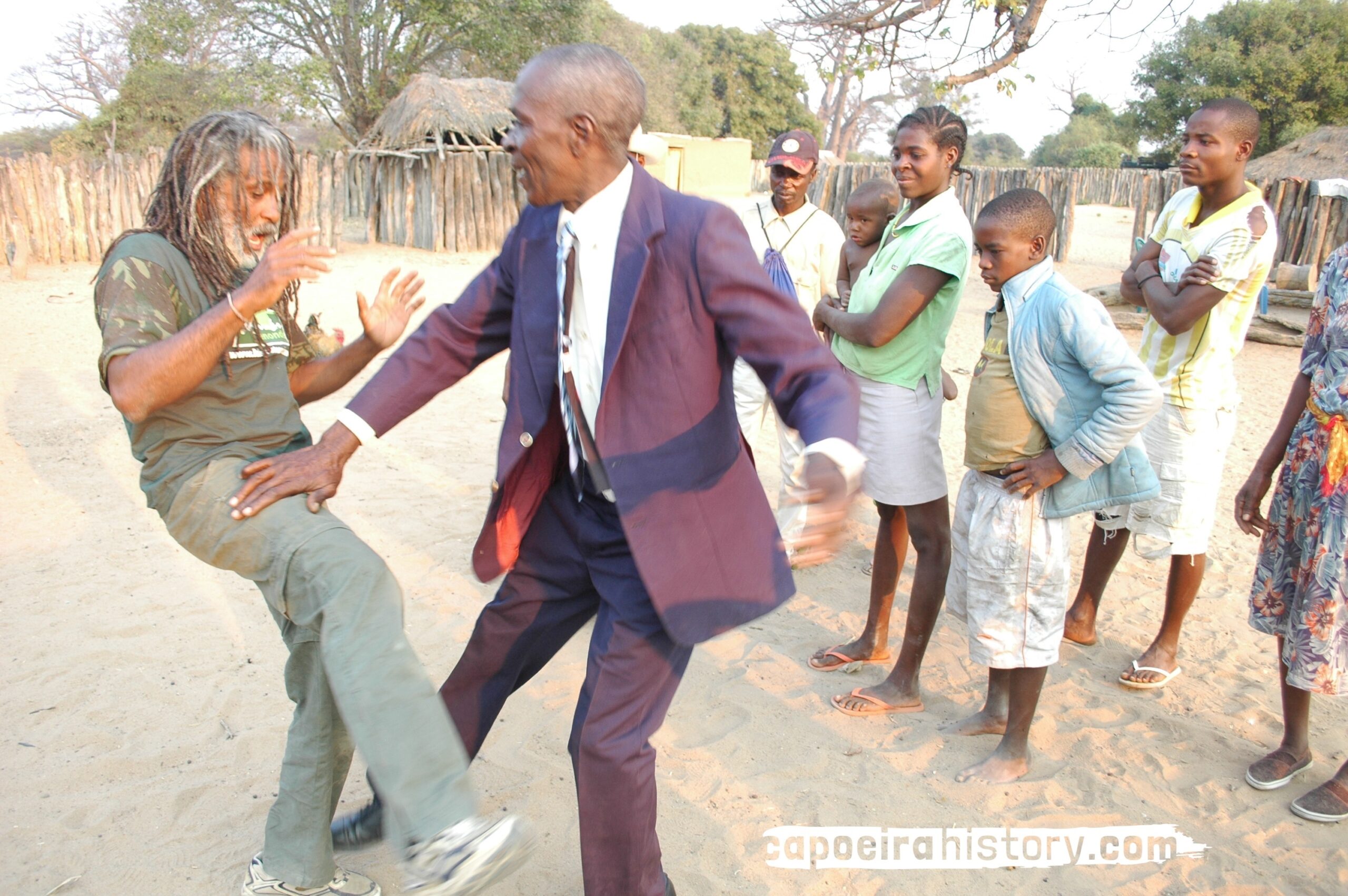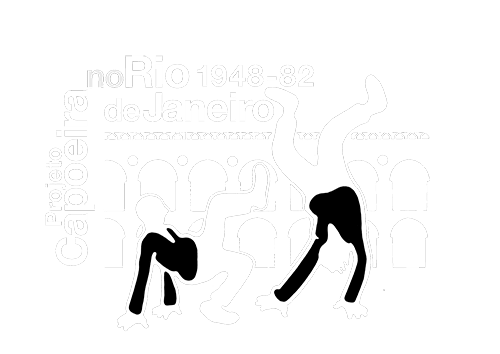The research

Combat Games and Musical Bows
The association between combat games and musical bows in the film is the result of our capoeira-centred approach. We did not aim for an exhaustive investigation of Nyaneka society and culture, but more specifically for dialogue between capoeira and combat games in Angola. Hence the film does not aim at an “objective” portrait of the Nyaneka way of life, but rather documents our route: thus the film accompanies Cobra Mansa’s search for his own ancestry, starting in his hometown Duque de Caxias on the periphery of Rio de Janeiro before crossing the Atlantic and taking up a diasporic dialogue that begins at the port of Benguela, from which 750.000 enslaved Africans were embarked to Brazil.
Showing capoeira in the Angolan interior of course had a flavour of return, of taking Brazil to Angola. Even if imaginary, this idea of return also was the reading of some of our interlocutors (see for instance Angelino’s testimony). Similarly, the project attempted to take a little bit of Angola to Brazil. Selections of our material were shown to capoeiristas, maroons (quilombolas) and practitioners of Afro-Brazilian religion in Brazil. Each of them reacted in their own way, but all expressed strong feelings of both closeness and distancing, leading sometimes to a repositioning of their idea of Angolan roots (as Mestre Lua Rasta for instance explains in clip 6).

The discussion and exchanges with mestres and specialists on both sides of the Atlantic about the relatedness of their traditions was immensely helpful for the evolution of our own thinking on the matter. Earlier enquiries about capoeira “origins” often focus on specific movements or instruments – which was also our point of departure. The swiping kick known as “stingray’s tail” (rabo de arraia or meia lua de compasso), for instance, is often seen as a core marker of capoeira’s idiosyncrasy (because rare in other martial arts). The berimbau is considered to be at the heart of the game (even though it only entered capoeira practice in one location and probably only at the end of the nineteenth century).
We came to the conclusion that links between capoeira and Nyaneka combat games have far more importance on a spiritual plane than as regards their purely formal aspects. Capoeira and engolo each depend upon their particular body game – hence our title. Capoeira and its south Angolan counterparts are (or at least were) also games that could turn into serious fights. They share that strategic ambiguity. Although engolo appears in Brazilian accounts mostly as a dance it could also be mortal combat. Even friendly games could finish badly. That is why anybody entering the engolo circle in former times went in at his own risk, without being able to ask for any compensation. As the best-known engolo refrain goes: “Who dies in engolo is not wept for.”

The film seeks to establish dialogues without imposing a simplistic view of capoeira “origins”. From a historian’s perspective, to consider the contemporary zebra dance as the unique origin of capoeira is problematic because of the anachronism it entails: changes affected Angolan combat games and cultures in the past two hundred years in ways at least as dramatic as those which affected capoeira and Brazilian society over the same period. Furthermore, the great majority of enslaved Africans came from other regions of Central and West Africa, and may have brought their own particular combat games to Brazil and the Americas.
Hopefully more research into other forms will complement our knowledge of the many traditions that may have contributed to the development of capoeira, along with further study of related arts in the Black Atlantic. Hence the film does not aim to provide “definitive” answers to questions of capoeira’s “origins”, but rather seeks to provide a space in which viewers can develop their own thoughts about possible roots and routes.


